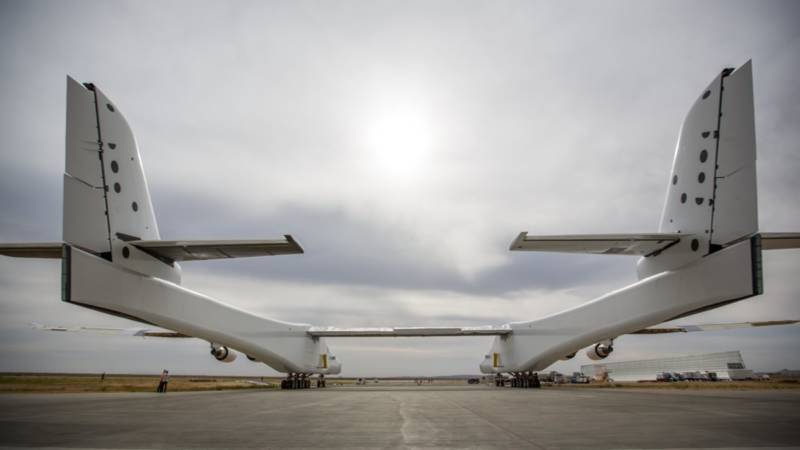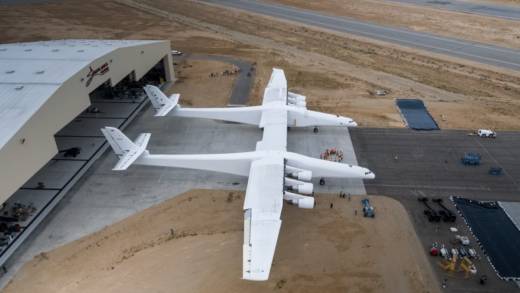Air launch: On launch missions, Stratolaunch will carry as many as three rockets attached to the center of the wing between the two fuselages. The rockets will be released, ignite their engines and carry small satellites weighing up to 1,000 pounds to low Earth orbit. Under a deal announced last year, Stratolaunch will use Pegasus XL winged rockets provided by Orbital ATK of Dulles, Virginia. Stratolaunch says the advantages of its system include being able to use numerous airports and avoid the limitations of fixed launch sites that can be impacted by weather, air traffic and ship traffic on ocean ranges.
History: Airborne launches date back decades, most famously to the X-15 program of the 1950s and '60s, when manned rocket planes were carried aloft under the wing of a B-52 bomber and released on hypersonic research flights. In the 1990s, Orbital Sciences Corp. (now Orbital ATK) began releasing rockets from the belly of a converted L-1011 airliner to put small satellites into low Earth orbit.
More recently, Paul Allen, the Microsoft co-founder, funded development of the Burt Rutan-designed SpaceShipOne, the first privately developed manned spacecraft. Suspended between the twin fuselages of a special jet, SpaceShipOne was carried to high altitude and released. It reached space on three suborbital flights in 2004. The same launch concept is being used for SpaceShipTwo, the passenger-carrying craft being developed for Sir Richard Branson's Virgin Galactic space tourism enterprise. A spinoff, Virgin Orbit, is also developing an air launcher for putting small satellites into space.
What's next: The rollout at Mojave Air & Space Port in the desert northeast of Los Angeles followed removal of scaffolding used during construction and placement of the aircraft on its 28 wheels for the first time.
Initial testing will focus on filling the six fuel tanks to ensure they are properly sealed and that related mechanisms are operating properly.
The aircraft will then be taken back inside the hangar for weight and balance testing. Ground testing will lead to flight operations and the first launch demonstration, which is expected in 2019.


